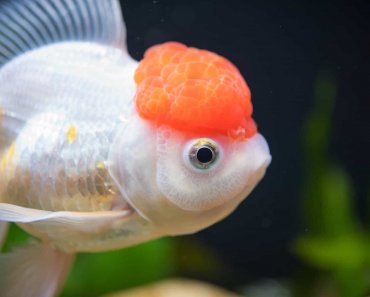When it comes to setting up a community fish tank, mollies have to be at the top of the list for many hobbyists! These brightly colored, active fish add a wonderful pop of color to your aquarium, are easy to care for, and are prolific livebearers, providing you with lots of new fish.
However, one of the problems with a community tank is occasional outbursts of aggressive behavior between the residents. That can be distressing for the fish keeper and sometimes leads to stressed livestock and even injured fish.
So, are mollies aggressive fish? How do you prevent female mollies from being harassed by males? And how many mollies should you keep together?
Read this guide to learn more about aggression in mollies, its causes, and how to keep the peace in your tank!
Are Mollies Aggressive Fish?
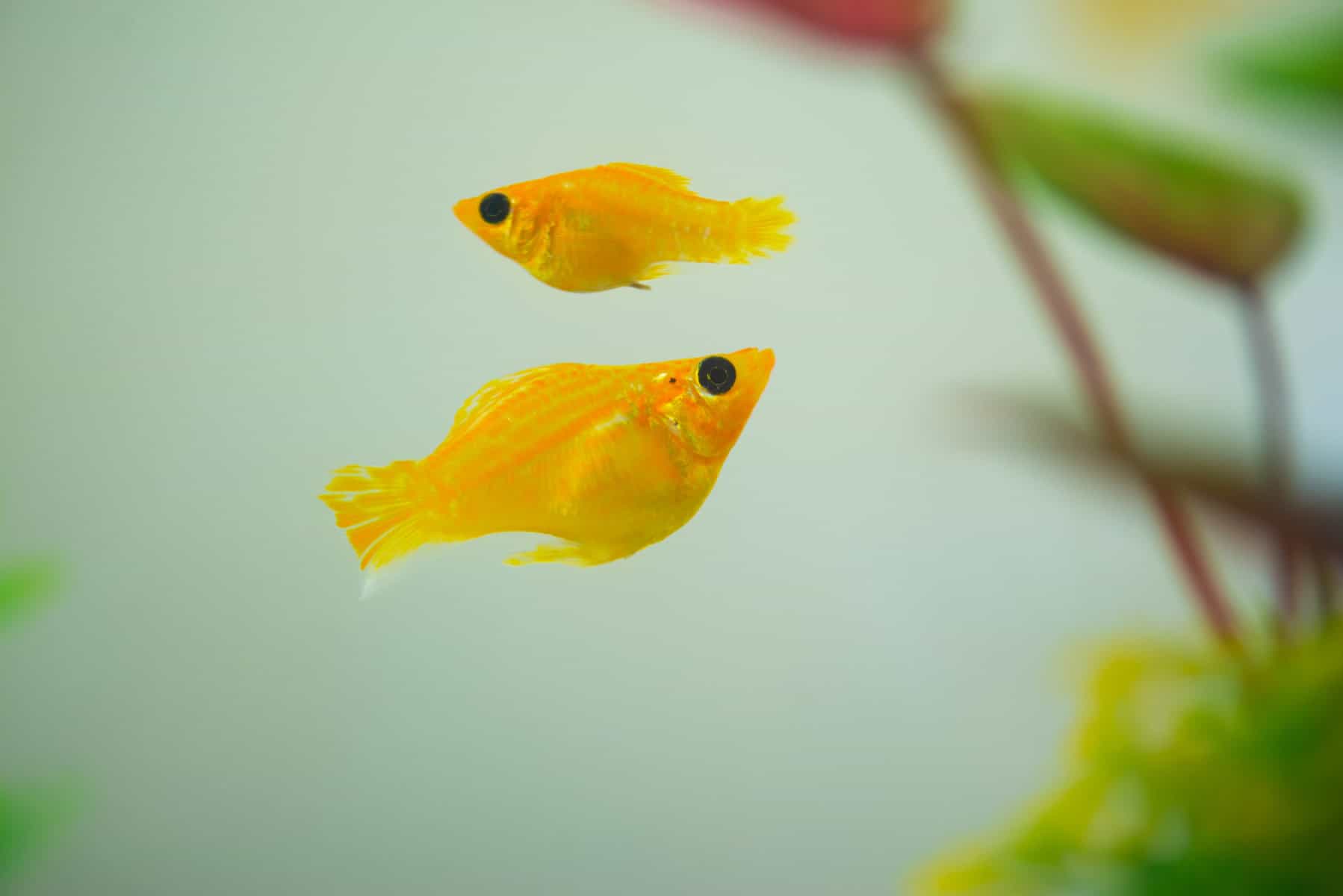
Generally, mollies are a peaceful species that are not known for showing aggression toward other species of fish.
That said, they will squabble amongst themselves under certain circumstances.
Establishing a Hierarchy
If you keep more than one male molly, you might see some aggression within the group while a pecking order is being established. The bickering is usually not serious and quickly subsides when one male backs down.
Lack of Space
Mollies are active fish that need plenty of swimming space.
If the environment becomes crowded and there’s not enough room, the fish can become aggressive toward each other and their tank mates.
Lack of Food
Hungry fish are often aggressive and feisty, so they might become bad-tempered if you don’t offer your fish enough to eat.
Spawning
Mollies are prolific breeders, and males can become aggressive when in spawning condition. Male mollies’ temperature rises when they are in breeding conditions, and you’ll see males chasing females constantly as a prelude to spawning.
Although that can look like the fish are fighting, this kind of “aggression” is a natural part of the breeding ritual, so don’t panic!
Too Much Attention!
I’ve experienced this problem in the past with mollies and guppies. The male fish are constantly harassing the females in what’s a pretty belligerent manner. That often results in the females becoming stressed, which can lead to disease outbreaks and early mortality.
Unlike some types of fish, mollies don’t form mated pairs, so you can mix a small group of random females with one male and not offend anyone. That combination usually prevents the ladies from being pestered too much and makes for a more peaceful group.
Signs of Aggression
So, how do you know when your mollies are being aggressive? There are several giveaway behaviors that demonstrate true aggression rather than minor bickering.
Sparring
If you have more than one male in a group of mollies, sparring is a normal behavior and doesn’t usually amount to more than the rivals chasing each other around the tank.
The fish usually give up on this behavior when they get distracted or bored.
Spawning
Sparring can look very similar to breeding behavior in mollies.
However, if you look closely, you’ll notice one slim, vividly colored fish chasing a plumper one that has less vibrant colors. The slim fish is the male, and the drab one is the female. That pursuit can be very stressful for the female unless the male desists fairly quickly.
Signs of Aggression
You can usually tell if your mollies are becoming aggressive since they will display several giveaway signs:
- Rigid, spread fins
- Brighter coloring
- Head twitching
- Darker eye color
- Skittish behavior
So, how do you prevent your mollies from becoming aggressive?
Preventing Aggression in Mollies
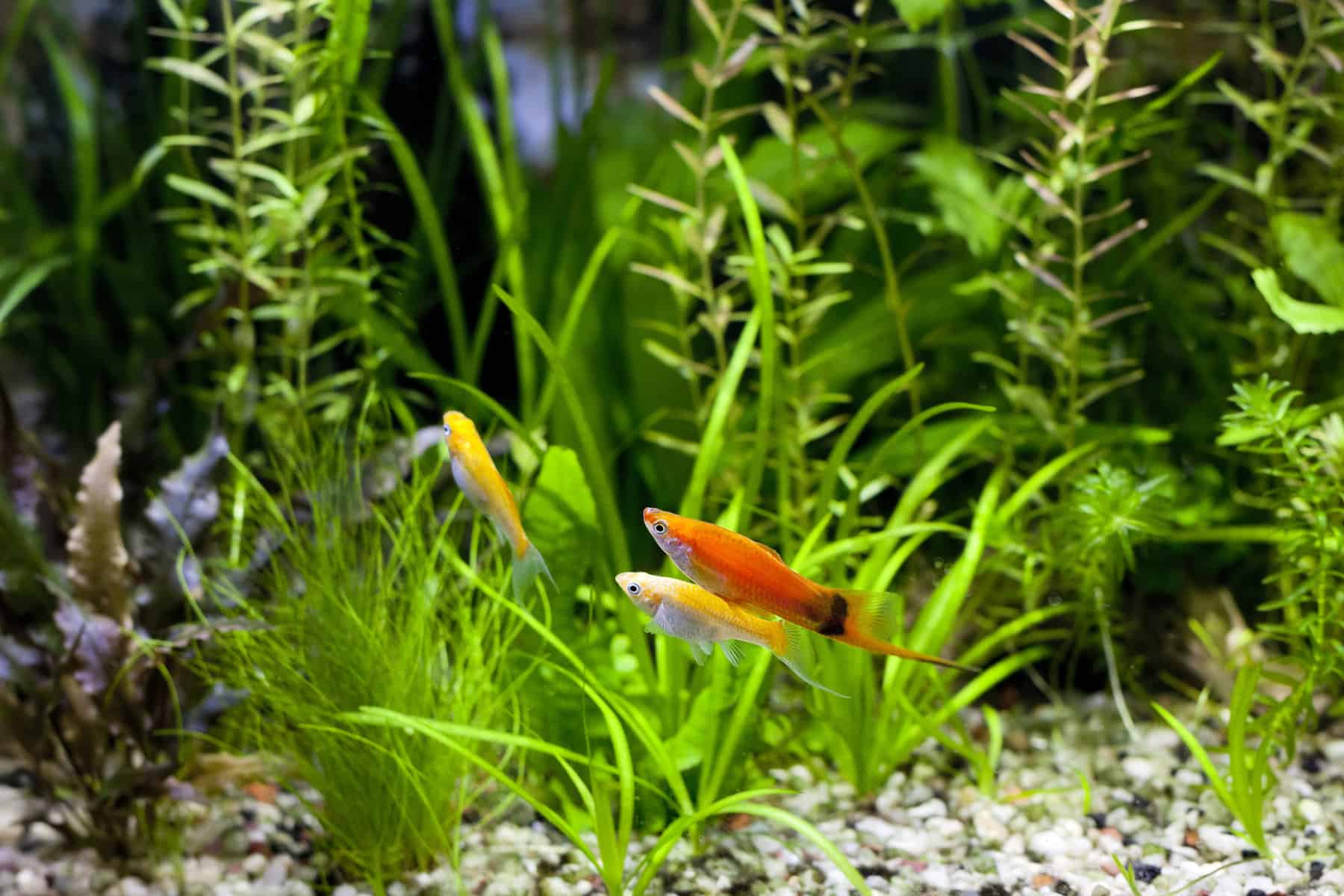
Fortunately, there are a few ways of reducing and preventing aggression in mollies.
Boys and Girls
As mentioned above, male mollies can become overly attentive when presented with a group of females. However, you can mitigate that somewhat by having the correct male-to-female ratio.
I recommend having one male molly to four or five females. That stops the females from being hassled and prevents stress.
Tank Size

One primary reason for aggression in a fish tank is overcrowding. That can cause your fish to hide away or start fighting amongst themselves or with other tank residents simply because they feel trapped.
So, you can prevent outbreaks of aggression by not overstocking your fish tank. When buying fish for your setup, remember the fish you find in fish stores are usually juveniles that will grow as they mature. That means you’ll need to buy a large enough tank to accommodate them.
Also, think about the shape of the aquarium. For example, a rectangular tank allows more swimming space for lively fish that swim in the central part of the water column.
Hiding Places
It’s a good idea to provide plenty of hiding places in your fish tank where your mollies and other fish can take shelter if they’re being hassled by tank mates.
Pieces of driftwood, twisted roots, smooth stones, and rockwork can make excellent retreats that look beautiful, too. Live plants are excellent for your water quality and provide good cover for your fish. Floating plant species create dappled shade and offer shelter for fish fry and shy fish species.
However, don’t be tempted to stuff your aquarium with decorations, or your fish won’t have enough space to swim!
How Many Mollies?
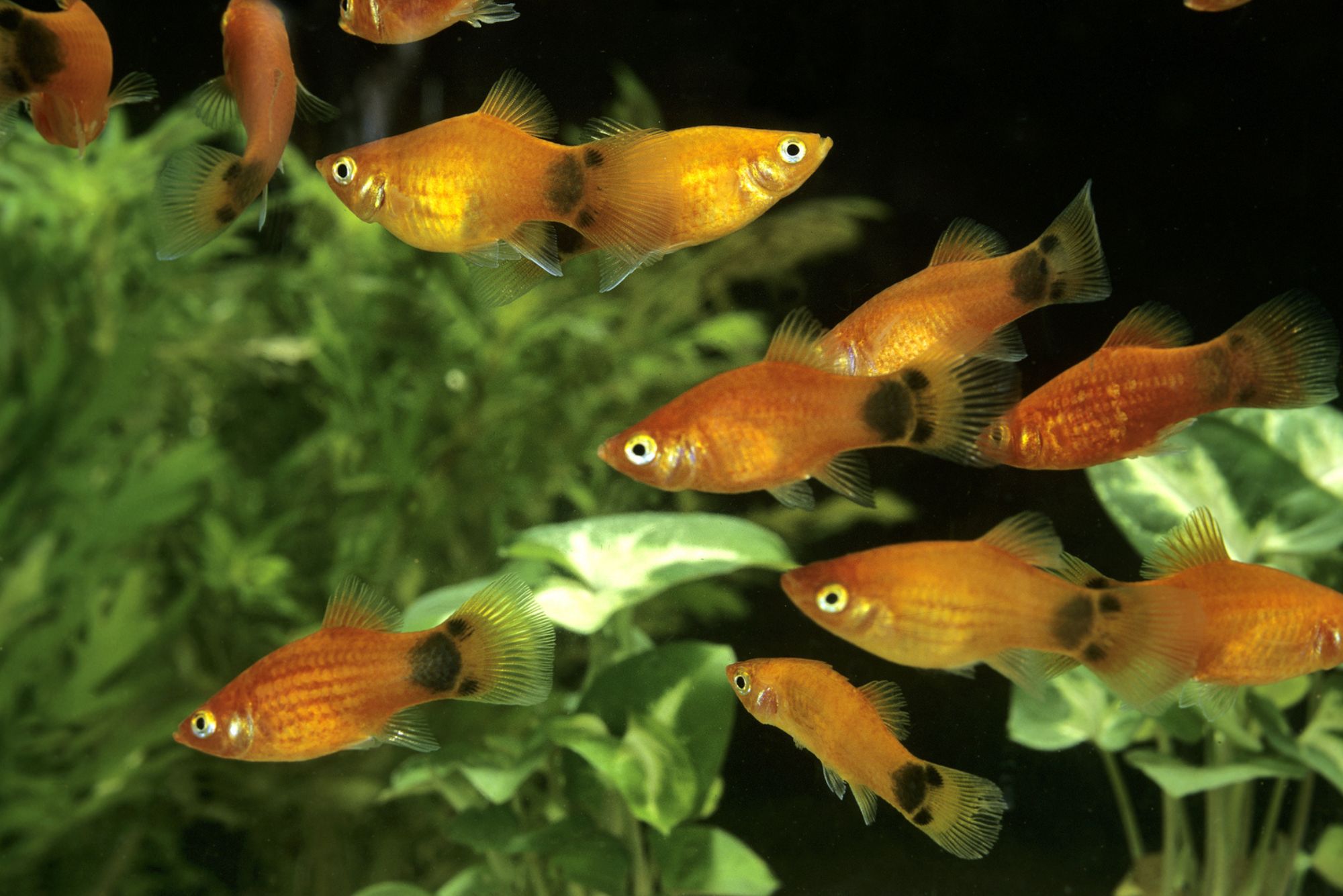
A tank with mollies is at its most peaceful when the fish are kept in small groups of around five individuals. Of course, if you have a large enough aquarium, you might want to keep more. As previously mentioned, it’s best to stick to one male fish with a few females, as that keeps fighting over mates and hierarchy to a minimum.
Keeping one molly on its own is not a good idea. That leads to defensive behavior and could trigger aggression toward tank mates.
Feed Your Fish Correctly
Newbie fish keepers tend to overfeed their fish, so don’t make the mistake of taking things too far the other way and not offering your pets enough food! If the fish are hungry, there’s a chance they will fight each other to get to the food that’s on offer.
As a general rule of thumb, we recommend that you feed your fish twice a day, offering them only what they will eat in around two or three minutes. After that time, if there’s still lots of food left floating in the water, you’re overfeeding your fish!
Another problem with mollies is that they tend to eat their fry if hungry, so providing your fish with adequate food should prevent that.
New Arrivals
Mollies are shoaling fish that like to establish a hierarchy within the group. Once that pecking order is sorted out, the group settles down, and things are usually peaceful. However, adding new mollies to the tank upsets that delicate balance and can kick off disputes.
That said, if you add a few new females to a tank with one or two males, it’s more likely that the males will occupy themselves flirting with and pursuing the females than fighting amongst themselves!
Ideally, to keep the peace, you should add a group of mollies to your community setup at the same time and when they’re still juveniles.
What Fish Get Along With Mollies?
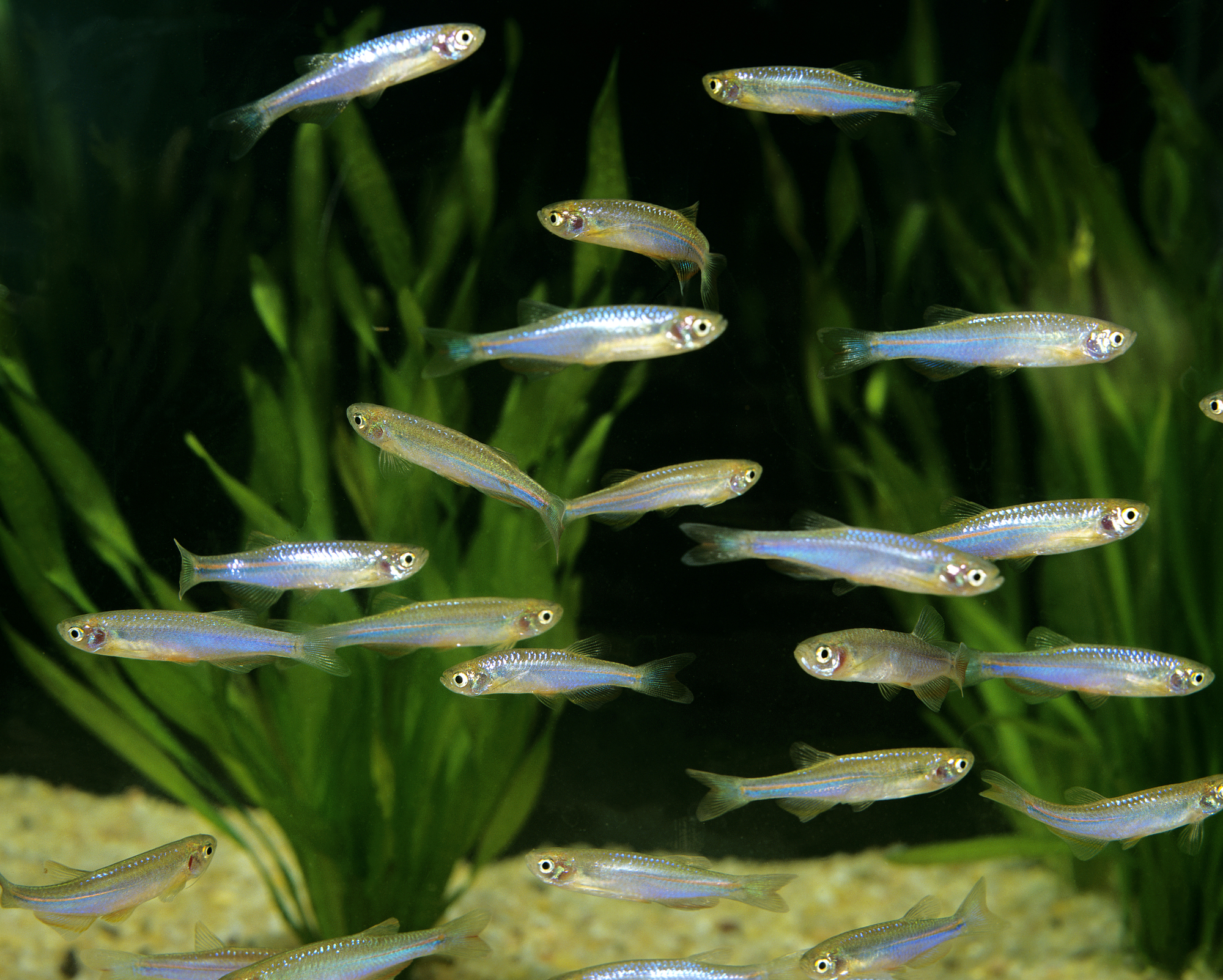
Of course, choosing the right mix of tank mates to go with your mollies is one surefire way of avoiding trouble.
So, what fish make good tank mates for mollies?
The best companions for your mollies are small, peaceful fish species that like to hang out in schools or loose shoals. That way, the mollies won’t feel that they need to defend their territory against one individual, and the new arrivals will have safety in numbers.
Tetras, danios, and rasboras are a pretty safe choice, and they are active, pretty fish that make a good display in the aquarium. Bottom-dwellers like Corydoras catfish are also a good choice since they won’t bother your mollies and vice versa.
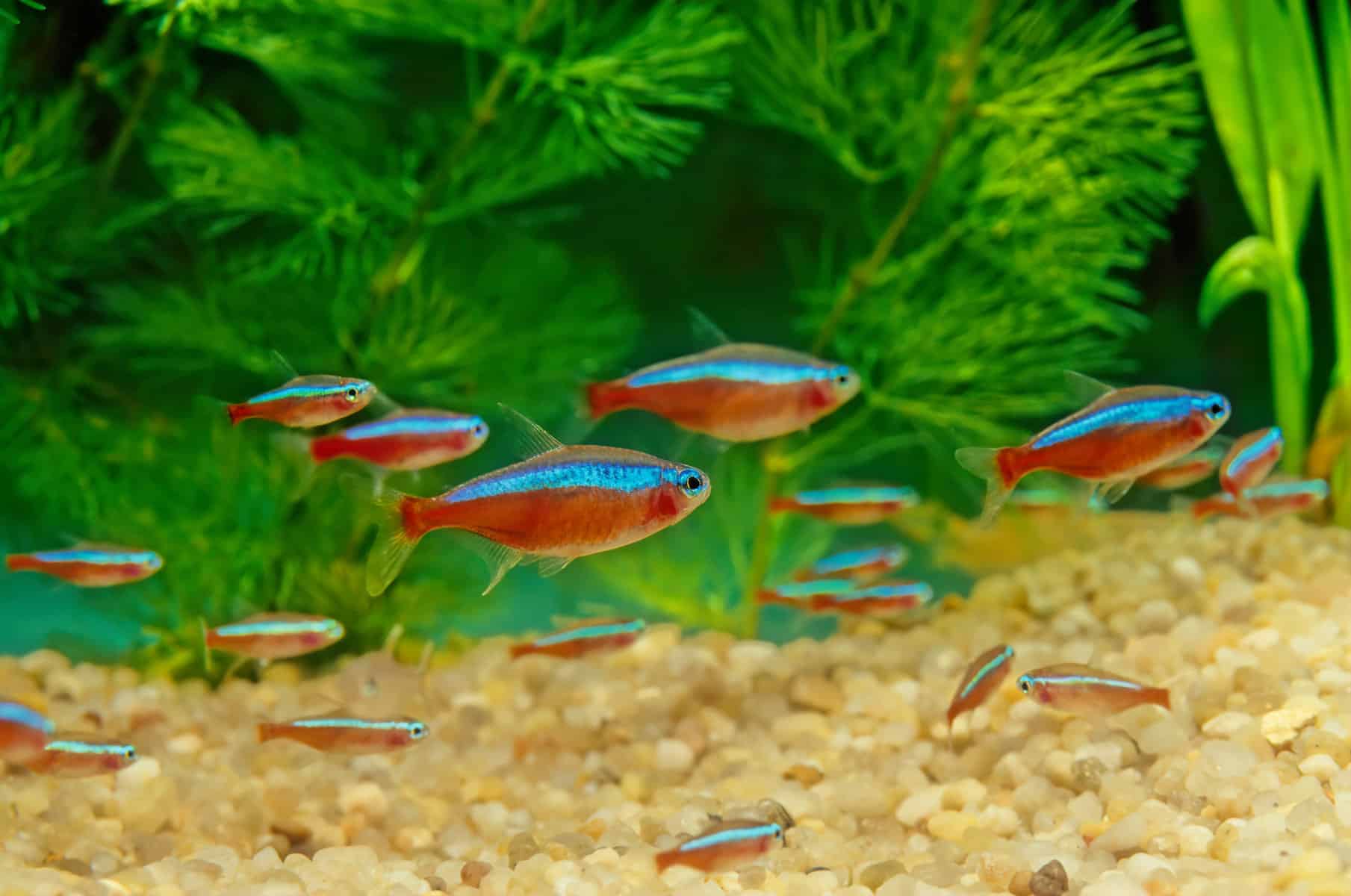
In addition, there are several different varieties of mollies that can work well, provided you stick to the one male to three or four females rule.
FAQs
In this part of our guide, we answer a few of the most frequently asked questions about Mollies and their behavior and temperament.
Q: Do Mollies Nip Other Fish?
A: Mollies are generally peaceful fish, although they will nip other fish’s fins under certain circumstances. For example, if the tank is overcrowded or there are too many male mollies in the aquarium, they might begin nipping to establish a hierarchy.
Q: Are Black Mollies Aggressive Fish?
A: Black molly fish are usually peaceful, community fish. However, if you keep too many male fish in the same tank, squabbles can break out. In addition, female fish outnumbered by males are often harassed.
Q: What Fish Can I Put With Mollies?
A: Mollies are peaceful community fish that generally do well when kept with other small, non-aggressive species, including danios, Corydoras catfish, barbs, loaches, tetras, and other livebearer species.
Q: Are Mollies Aggressive Toward Each Other?
A: Mollies do not usually display aggressive behavior toward each other. However, the fish can become what I’d describe as mildly miffed occasionally if they feel threatened or are trying to establish a hierarchy among the group. That’s often the case when new fish are introduced to a tank.
Q: Are Black Mollies Territorial?
A: In a small aquarium, male Black molly fish can become quite territorial. So, we recommend that you keep one male to a ratio of four to five female mollies. Even in a very large tank, it’s best to keep more male than female fish, as that prevents the girls from being harassed by over-amorous males.
Q: How Many Black Mollies Should Be Kept Together?
A: Mollies are shoalers that prefer to be kept in groups of at least five, ideally with one male to three or more female mollies.
Final Thoughts
Did you enjoy our article about aggression in molly fish? If you found the information helpful, please remember to share the guide with other hobbyists.
Mollies are typically peaceful, shoaling livebearers that make an attractive, active display in a community aquarium. You might see some displays of mildly aggressive behavior if you have too many males in the tank. Ideally, you want one male molly to three or more females.
That prevents the females from being stressed and hassled too much, and you won’t have the potential issue of males becoming territorial and belligerent toward each other.
How many mollies do you have in your tank? What tank mates work best with your molly fish? Tell us in the comments box below!



